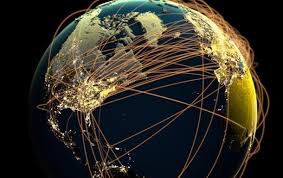
It is hard to imagine the modern world without metal products. Cars, bridges, household appliances, jewelry, dishes – almost everything that surrounds us contains a certain amount of metals.
In school history, we were taught that the “Iron Age”, which replaced the “Bronze Age” about 3-4 thousand years ago, was revolutionary for humanity on a historical scale.
But our days can already be called the “age of rare and rare-earth metals.” They are the basis of all the electronics that surround us, on which, in fact, our civilization is built. Also, without these metals, neither modern aviation, nor space exploration, nor breakthrough medical technologies would be possible.
Smartphones, flat-screen TVs, computer monitors, electronic components, strong permanent magnets, GPS navigators, radars, lasers, MRI scanners, contrast agents for tumor diagnostics, sunglasses, optics for space and military equipment, structural elements of nuclear reactors, atomic microbatteries, alloying additives for non-ferrous and ferrous metallurgy, catalysts in the chemical industry – all this makes up our modern developing world, and all this is impossible to imagine without the use of rare and rare earth elements.
This means that in our time, countries that have deposits of these “21st century metals” are unexpectedly gaining an advantage in the global distribution of wealth. More precisely, not just possessing them, but managing to establish extraction and processing. Currently, rare and rare earth metals are among the main types of materials, the presence of which determines the level of development of high technologies. In modern conditions, the demand for these metals is constantly growing.
Since the second half of the 20th century, the levels of production and consumption of rare and rare earth elements have come to be considered as indicators of economic and national security in industrialized and developing countries. Over the past 10 years, global consumption of lithium, niobium, vanadium, tantalum, rare earths and some other rare metals has increased by 2-3 times, and the most scarce and strategically important elements (e.g. rhenium and indium) by 7-10 times.
It is expected that over the next two decades, demand for copper and rare earth elements will increase by more than 40 %, for nickel and cobalt by 60-70 %, and for lithium by almost 90 %.
According to the International Energy Agency, production of essential rare and rare earth metal minerals will need to expand significantly to meet projected demand by 2030. An additional 50 lithium, 60 nickel and 17 cobalt mines will need to be brought online to meet global net carbon emissions targets by 2030.
Humanity will always strive to fly higher, travel faster, penetrate deeper into the earth’s interior, and at the same time reduce the costs of the resources needed for this. This means that new generation materials must surpass previous ones and have new, unique properties. Such properties can be provided by rare and rare earth metals.
Therefore, the problems of developing rare and rare earth metals – how to extract them, how to process them, how to produce finished products from them – seriously worry those who think about the future.
In this sense, the production of rare and rare earth metals has now become a powerful tool of geopolitics.
